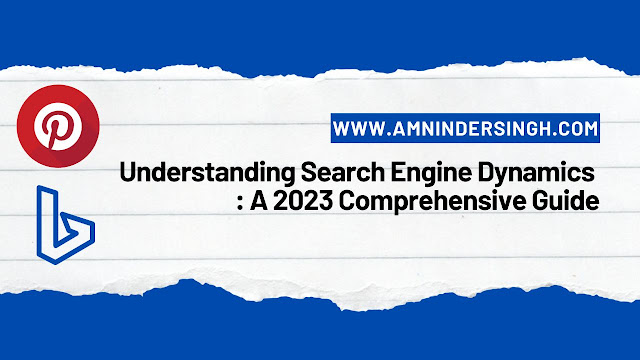Search engines have become an integral part of our daily lives, providing us with instant access to a wealth of information with just a few keystrokes or voice commands.
However, the inner workings of these powerful digital tools are often shrouded in mystery for the average user.
In this article, we will delve into the complex world of search engine dynamics, demystifying how they operate and why they matter in the digital age.
The Role of Search Engines
Before we delve into the dynamics of search engines, let’s first understand their fundamental role.
Search engines serve as gateways to the vast expanse of the internet.
They are the navigational compass guiding users through the ever-expanding digital universe.
The primary function of search engines is to provide relevant and useful information in response to user queries, connecting individuals with websites, articles, images, videos, and other online content.
Crawling, Indexing, and Ranking
To comprehend the dynamics of search engines, one must grasp the three core processes that underpin their functionality: crawling, indexing, and ranking.
1. Crawling:
Crawling is the first step in the search engine dynamic.
Search engines employ specialized software programs called web crawlers, spiders, or bots to systematically browse the internet.
These digital arachnids follow hyperlinks from one web page to another, traversing the vast network of interconnected sites.
During this process, the crawlers collect information about each webpage they encounter, indexing details such as text content, images, metadata, and links.
It’s worth noting that not all pages are crawled; search engines prioritize pages that are frequently updated, linked to from other reputable sites, or deemed relevant to popular search queries.
2. Indexing:
Indexing is akin to cataloging the internet.
Once the web crawlers have gathered data from web pages, search engines organize this information into massive databases known as indexes.
These indexes function like digital libraries, enabling search engines to quickly retrieve relevant content when a user enters a query.
Think of indexing as the equivalent of creating an index in a book, except on a colossal scale.
Each webpage’s data is tagged, categorized, and stored in a structured format, making it easily accessible for future searches.
3. Ranking:
Ranking is where the magic happens. When a user enters a search query, the search engine’s algorithm springs into action.
This algorithm assesses the vast index to identify web pages that best match the user’s intent.
These results are then ranked based on a multitude of factors to determine their relevance and usefulness.
Ranking factors include keyword usage, content quality, backlinks from other reputable sites, page load speed, user experience, and even the device used for the search (mobile or desktop).
The goal is to present the user with a list of results that align with their query and provide the most valuable information.
The Evolution of Search Engine Dynamics
The dynamics of search engines have evolved significantly since the early days of the internet. In the early 1990s, search engines were rudimentary, relying on basic keyword matching.
However, the explosion of web content necessitated more sophisticated methods.
Semantic Search:
Modern search engines utilize semantic search, which aims to understand the context and intent behind a user’s query.
Rather than relying solely on keywords, semantic search algorithms consider factors such as user location, search history, and natural language processing to deliver more relevant results.
Mobile-First Indexing:
With the proliferation of mobile devices, search engines have adopted mobile-first indexing. This means that they prioritize the mobile version of websites when ranking and indexing content.
Mobile optimization has become a critical aspect of search engine dynamics.
Personalization:
Search engines personalize results based on individual user data, such as search history and location.
This personalization tailors search results to suit the preferences and needs of each user.
The Impact on Users and Businesses
Understanding search engine dynamics is not only enlightening but also vital for both users and businesses.
For Users:
Search engines empower users by granting them access to a vast repository of information.
Understanding how search engines work can help users craft more effective queries to find the information they seek.
Awareness of personalization and the potential for filter bubbles (where users are exposed only to information that aligns with their existing beliefs) can encourage users to seek diverse perspectives online.
For Businesses:
Businesses can leverage search engine dynamics to improve their online presence.
SEO (Search Engine Optimization) is the practice of optimizing web content to rank higher in search engine results.
Understanding ranking factors and algorithm updates is essential for SEO success.
Paid advertising, such as Google Ads, allows businesses to appear prominently in search results. Knowledge of how search engines rank paid ads can help businesses allocate their advertising budgets effectively.
Understanding Search Engine Dynamics : Conclusion
Search engines are the invisible engines driving our exploration of the digital world.
Understanding the dynamics behind these powerful tools empowers users to navigate the internet effectively and businesses to establish a formidable online presence.
As search engines continue to evolve, so too should our understanding of the intricate processes that shape our digital experiences.
This article is a part of our Search Engine Optimization (SEO) Module.
Module 4: Search Engine Optimization (SEO)
4.1 Understanding Search Engine Dynamics
4.2 Implementing On-Page SEO Techniques
4.3 Mastering Off-Page SEO Strategies
4.4 Navigating Technical SEO Challenges
4.5 Leveraging SEO Tools and Analytics

